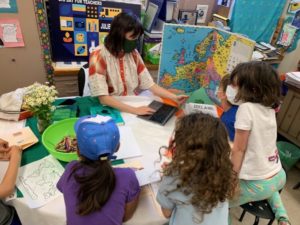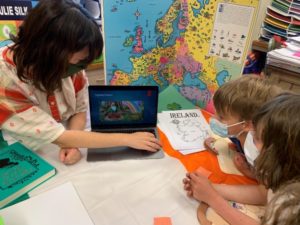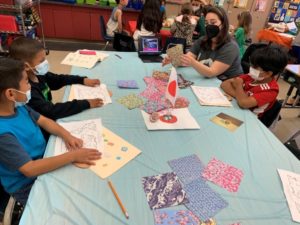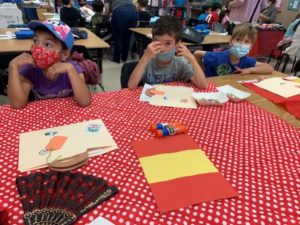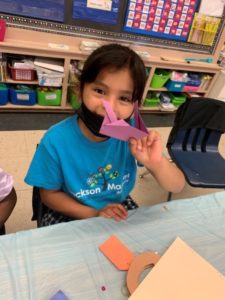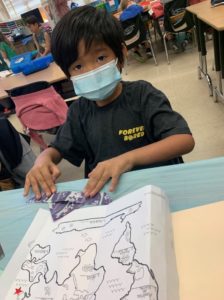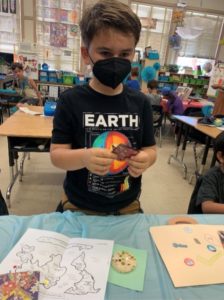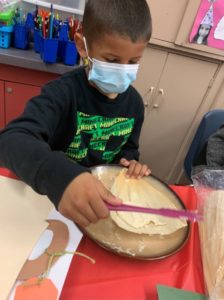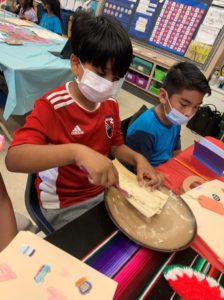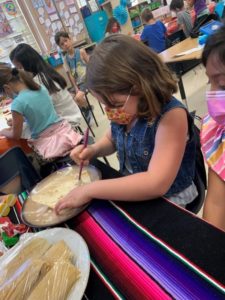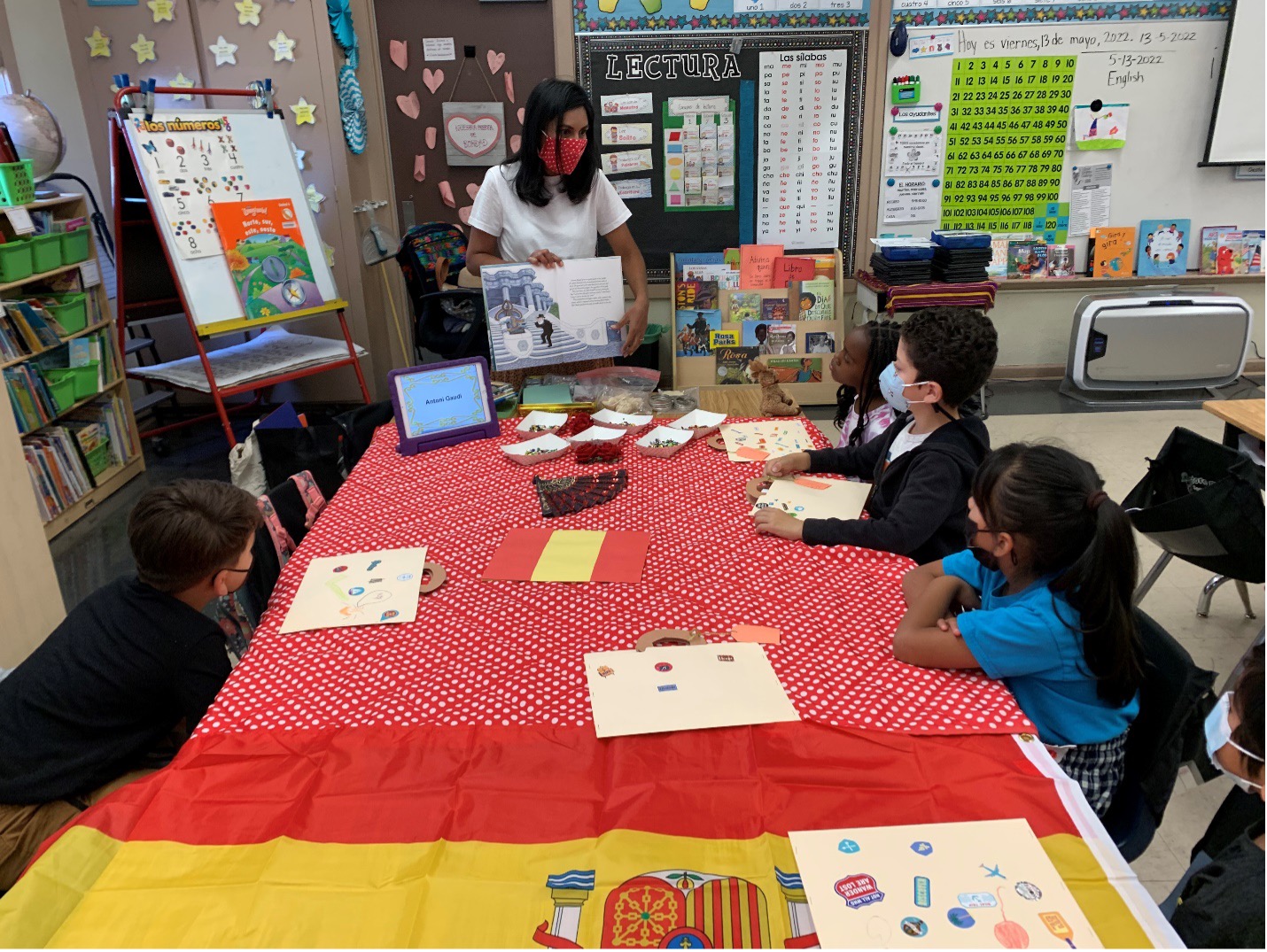
Global Literacy Café
By Julie Silk, 1st grade teacher in Pasadena Unified School District
Overview
Grade levels:
1st Grade Dual Language
Types of activities:
Co-op learning, small group, hands-on, digital
Materials/resources:
- 4 parent volunteers from different cultural backgrounds
- paper suitcases and passports
- world maps
- varying supplies according to activities selected by parent volunteers
- script template for parent volunteers
- writing composition journal or writing paper to write narrative, informational, and opinion pieces based on imaginary travel experiences
Time requirement:
- 60-70 minutes in total
- 15-20 minutes at each country with time to rotate in between; writing lessons would occur separately
Instructional Procedures:
For this lesson, students will each have a paper suitcase and paper passport made for them, as well as a world map. They will take an imaginary trip to visit 3 or 4 different countries from different continents in the world by rotating through the countries in small groups.
Parent volunteers will represent the different countries based on their own heritage or another connection their family has to that country. At each “country” they “visit” students will be greeted by a parent volunteer in the native language of that country. They will draw a symbol or receive a sticker or stamp that represents that country in their pretend passports. Then they will mark the location of the country on their world map. After the first country they visit, they will draw a “flight path” from one country to the next.
The parent volunteers may wear traditional clothing from the country and display artifacts and visuals to represent the country, even food to taste from the country. Each parent will also prepare an activity that meaningfully represents the country. Last year, students visited Ireland, Spain, Japan, and Mexico. Activities included origami folding and tamale making, among other activities.
As a follow-up to this lesson, students will write a narrative describing their travel adventure, an informational piece about one country they visited, and an opinion piece about their favorite country visited including two or more reasons why.
Expected Impact
Standards (Social Science)
- CCSS.ELA-LITERACY.SL.1.1 – Participate in collaborative conversations with diverse partners about grade 1 topics with peers and adults in small groups.
- CCSS.ELA-LITERACY.SL.1.1.A – Follow agreed-upon rules for discussions (e.g., listening to others with care, speaking one at a time about the topics and texts under discussion).
- CCSS.ELA-LITERACY.SL.1.1.B – Build on others’ talk in conversations by responding to the comments of others through multiple exchanges.
- CCSS.ELA-LITERACY.SL.1.1.C – Ask questions to clear up any confusion about the topics under discussion.
- CCSS.ELA-LITERACY.SL.1.2 – Students compare and contrast the absolute and relative locations of places and people and describe the physical and/or human characteristics of places.
- CCSS.ELA-LITERACY.SL.1.4 – Students compare and contrast everyday life in different times and places around the world and recognize that some aspects of people, places, and things change over time while others stay the same.
Student Learning Outcomes (SLO’s)
In addition to the primary lesson objective, the activities included in this lesson also support the following social science standards:
- Locate on maps and globes the seven continents and the four oceans.
- Describe how location, weather, and physical environment affect the way people live, including the effects on their food, clothing, shelter, transportation, and recreation.
- Students describe the human characteristics of familiar places and the varied backgrounds of American citizens and residents in those places.
- Recognize the ways in which they are all part of the same community, sharing principles, goals, and traditions despite their varied ancestry; the forms of diversity in their school and community; and the benefits and challenges of a diverse population.
- Understand the ways in which immigrants have helped define Californian and American culture.
- Compare the beliefs, customs, ceremonies, traditions, and social practices of the varied cultures.
As a follow-up to this lesson and learning experience, students will have the opportunity to write in using all three text types:
- CCSS.ELA-LITERACY.W.1.1
- Write about the country you most enjoyed visiting
- Write opinion pieces in which they introduce the topic, state an opinion, supply a reason for the opinion, and provide some sense of closure.
- Choose one of the countries you traveled to and write what you learned about it.
- CCSS.ELA-LITERACY.W.1.2
- Write informative/explanatory texts in which they name a topic, supply some facts about the topic, and provide some sense of closure.
- Write a narrative about your imaginary traveling experience around the world.
- CCSS.ELA-LITERACY.W.1.3
- Write narratives in which they recount two or more appropriately sequenced events, include some details regarding what happened, use temporal words to signal event order, and provide some sense of closure.
Adopt & Adapt
Additional Notes or links to resources:
https://docs.google.com/document/d/1vat5JDrhiJX9nZAHCVPWotlkUytKL4j0iQoMxCb8lY4/edit?usp=sharing
